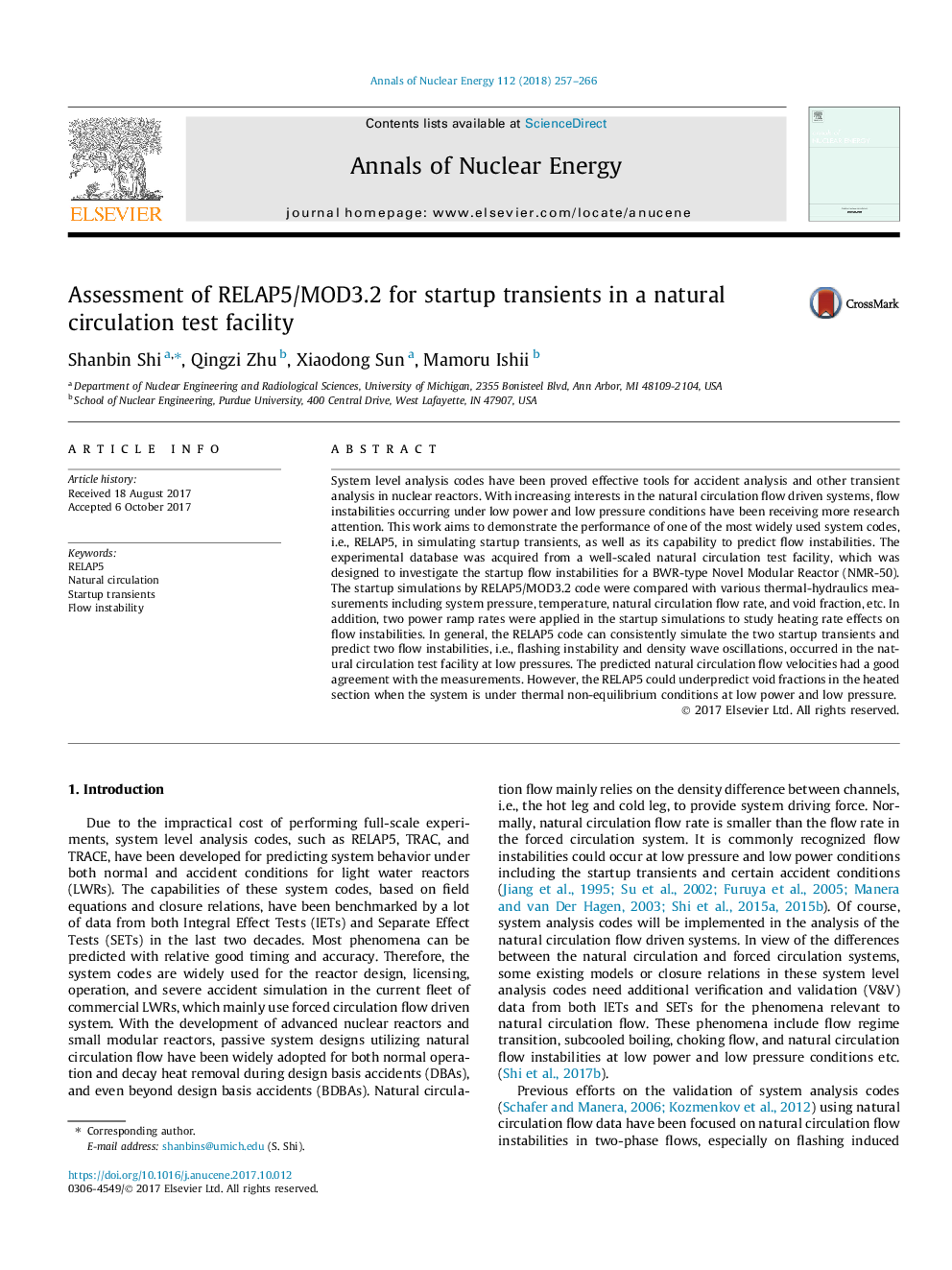| Article ID | Journal | Published Year | Pages | File Type |
|---|---|---|---|---|
| 5474766 | Annals of Nuclear Energy | 2018 | 10 Pages |
Abstract
System level analysis codes have been proved effective tools for accident analysis and other transient analysis in nuclear reactors. With increasing interests in the natural circulation flow driven systems, flow instabilities occurring under low power and low pressure conditions have been receiving more research attention. This work aims to demonstrate the performance of one of the most widely used system codes, i.e., RELAP5, in simulating startup transients, as well as its capability to predict flow instabilities. The experimental database was acquired from a well-scaled natural circulation test facility, which was designed to investigate the startup flow instabilities for a BWR-type Novel Modular Reactor (NMR-50). The startup simulations by RELAP5/MOD3.2 code were compared with various thermal-hydraulics measurements including system pressure, temperature, natural circulation flow rate, and void fraction, etc. In addition, two power ramp rates were applied in the startup simulations to study heating rate effects on flow instabilities. In general, the RELAP5 code can consistently simulate the two startup transients and predict two flow instabilities, i.e., flashing instability and density wave oscillations, occurred in the natural circulation test facility at low pressures. The predicted natural circulation flow velocities had a good agreement with the measurements. However, the RELAP5 could underpredict void fractions in the heated section when the system is under thermal non-equilibrium conditions at low power and low pressure.
Related Topics
Physical Sciences and Engineering
Energy
Energy Engineering and Power Technology
Authors
Shanbin Shi, Qingzi Zhu, Xiaodong Sun, Mamoru Ishii,
